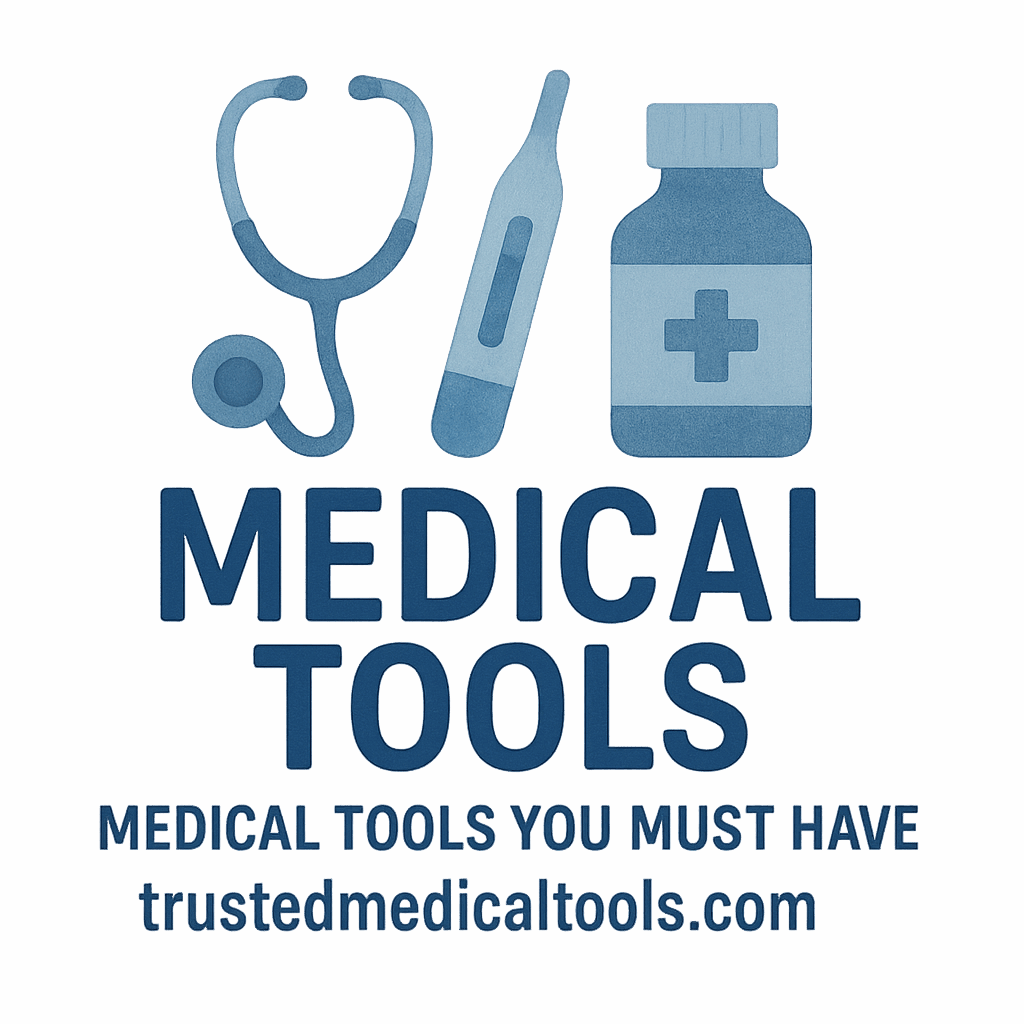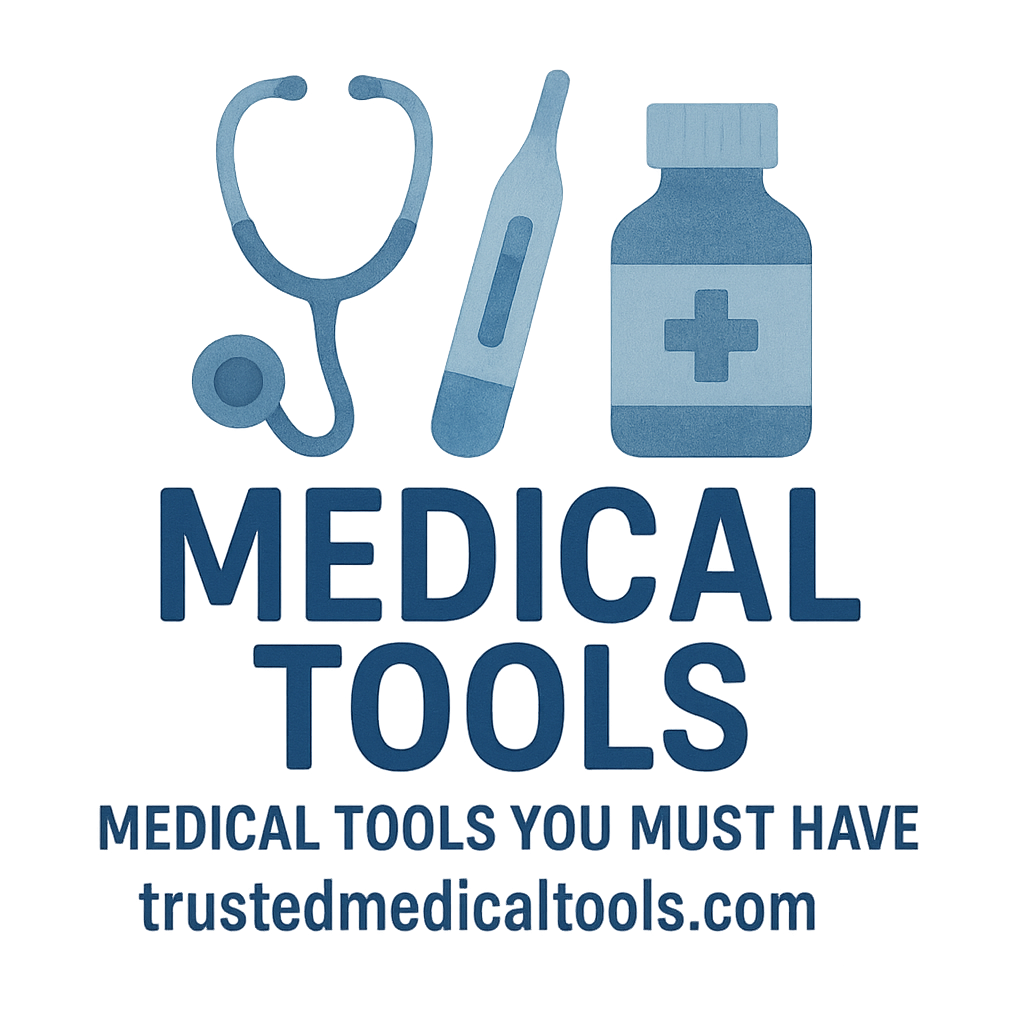Introduction
When it comes to first aid kits, it’s essential to have tools that are not only effective but also compact enough to fit in a bag without taking up too much space. Whether you’re traveling, hiking, or just preparing for everyday emergencies at home, a well-stocked first aid kit can be a lifesaver. In this article, we will explore 8 compact medical tools that every first aid bag should contain. These tools combine practicality, efficiency, and portability, ensuring that you are prepared for any situation without compromising on space.
Importance of a Well-Stocked First Aid Kit
Having the right tools at your disposal in an emergency can make all the difference. First aid kits are designed to handle a variety of minor injuries and health issues, from cuts and burns to allergic reactions and fevers. However, to be truly effective, the kit needs to include a selection of tools that can help you address these problems efficiently. Compact tools are key because they take up less space and provide maximum functionality.
Why Compact Tools Are Essential in First Aid Kits
First aid kits often come in small bags or boxes, so it’s important to choose tools that are both compact and useful. Here’s why compact tools should be your priority:
Space-Saving Solutions for Every Emergency
Compact tools ensure that your first aid kit doesn’t become too bulky, leaving room for all the other necessary items. By including only the most essential, space-efficient tools, your kit remains organized and accessible.
Convenience and Accessibility of Compact Tools
In an emergency, every second counts. Compact tools are not only easier to store, but they also make it quicker and easier to find what you need. A small, organized kit means less fumbling and more time to address the issue at hand.
Tool #1: Multi-Function Scissors
Versatility in Cutting and Safety
A multi-function scissor is one of the most versatile tools to have in any first aid kit. Whether you need to cut bandages, clothing, or even seatbelts in case of a car accident, multi-function scissors can handle it all. They often come with rounded tips for safety, making them ideal for cutting around wounds without causing further injury.
Features to Look for in Medical Scissors
When choosing scissors for your first aid kit, make sure they are durable, have a non-slip handle, and feature a sharp, stainless steel blade. A safety tip is also crucial to avoid any accidental cuts when using them in high-pressure situations.
Tool #2: Digital Thermometer
Quick and Accurate Temperature Readings
A digital thermometer is a must-have for monitoring body temperature quickly and accurately. Unlike traditional mercury thermometers, digital thermometers provide a fast, reliable reading with no risk of breaking or leaking dangerous substances.
Why Digital Thermometers Are Perfect for First Aid Kits
Digital thermometers are compact, easy to use, and versatile, offering both oral and axillary measurements. Their small size makes them perfect for any first aid kit, ensuring you can quickly check for fevers or other health conditions.
Tool #3: Adhesive Bandages and Dressings
A Must-Have for Quick Wound Care
Adhesive bandages are one of the first things you’ll need when tending to a cut or scrape. Their compact size and easy application make them ideal for quick wound care. Choose from various sizes and shapes to accommodate different injury types.
How to Choose the Right Adhesive Bandage for Your Kit
When picking bandages for your kit, opt for waterproof and sterile versions to ensure long-lasting protection against infections. A variety of sizes and shapes (such as strips, large pads, and knuckle bandages) will give you more options when treating injuries.

Tool #4: Instant Cold Packs
The Benefits of Cold Therapy in Emergencies
Cold packs are invaluable for reducing swelling, numbing pain, and providing relief for sprains, strains, or any minor injuries. An instant cold pack activates easily with a simple squeeze, making it an essential addition to your first aid kit.
How to Store and Use Instant Cold Packs
These packs are compact, portable, and easy to use. Make sure to store them in a cool, dry place, and check expiration dates periodically to ensure they work when needed.
Tool #5: Tweezers
Extracting Foreign Objects Safely
Tweezers are indispensable for removing splinters, ticks, and other small foreign objects that can get embedded in the skin. They are compact, lightweight, and allow for precision when extracting objects.
Types of Tweezers and Their Uses in First Aid
There are different types of tweezers, including flat-tip, pointed-tip, and fine-point tweezers. Choose a pair that is specifically designed for medical use to ensure that the tweezers are both durable and effective for all types of extractions.
Tool #6: Disposable Gloves
The Importance of Hygiene and Protection in First Aid
Wearing disposable gloves is crucial when administering first aid to avoid direct contact with bodily fluids and to prevent contamination. They protect both the victim and the caregiver.
How to Select the Right Disposable Gloves
Opt for latex-free gloves if you or others have latex allergies. The gloves should also be powder-free to minimize skin irritation. Make sure to have a few pairs in different sizes to ensure a comfortable fit.
Tool #7: Alcohol Wipes
Clean and Disinfect with Ease
Alcohol wipes are perfect for cleaning and disinfecting wounds, tools, and hands. They are small, disposable, and kill bacteria instantly, ensuring that wounds stay sterile until they are treated further.
The Best Way to Use Alcohol Wipes in First Aid Situations
Use alcohol wipes to clean the affected area before applying any bandages or ointments. They’re also perfect for sanitizing your hands or any instruments you use during treatment.
Tool #8: CPR Face Shield
How a CPR Face Shield Can Save Lives
In an emergency situation, performing CPR is one of the most important life-saving skills you can have. A CPR face shield provides a barrier between you and the victim while performing mouth-to-mouth resuscitation, reducing the risk of infection.
Features to Look for in a High-Quality CPR Face Shield
Look for a compact, single-use CPR face shield that includes a one-way valve for safety and comfort. The shield should be easy to store and simple to use in a high-pressure emergency situation.
Conclusion
Having the right compact medical tools in your first aid kit can ensure that you’re always prepared for emergencies. The tools we’ve discussed, such as multi-function scissors, digital thermometers, and adhesive bandages, offer versatility, portability, and effectiveness in treating a wide range of injuries. No matter the situation, these tools will help you manage minor health issues quickly and efficiently, keeping you and your loved ones safe.
Why These Tools Are Must-Haves for Your First Aid Kit
Choosing the right tools for your first aid kit doesn’t have to be complicated. By including these 8 compact medical tools, you can create a well-stocked, organized kit that’s ready for any situation.
Final Thoughts on Choosing Compact Medical Tools
Remember, a first aid kit is only useful if it contains the right tools. Compact medical tools not only save space but also provide the efficiency you need in times of crisis. Prioritize the essentials, and always make sure your kit is stocked and ready to go.
FAQs
1. What compact medical tools should I include in my first aid kit?
Some essential compact tools include multi-function scissors, digital thermometers, adhesive bandages, instant cold packs, tweezers, disposable gloves, alcohol wipes, and a CPR face shield.
2. Are digital thermometers more accurate than traditional ones?
Yes, digital thermometers offer faster and more accurate readings compared to traditional mercury thermometers. They are also safer to use.
3. How do I store medical tools properly in a first aid kit?
Store medical tools in a cool, dry place and ensure they are organized. Periodically check expiration dates and replace any expired or damaged items.
4. Can I use a CPR face shield more than once?
CPR face shields are designed for single-use to maintain hygiene and prevent contamination. Always dispose of the shield after use.
5. How can I ensure my first aid kit is always ready for emergencies?
Regularly check your kit to ensure it’s fully stocked and that all tools are in good working condition. Replace expired items and replenish supplies as needed.
6. Are alcohol wipes suitable for children’s injuries?
Yes, alcohol wipes are safe for use on children’s minor injuries. However, be gentle when cleaning wounds, as children’s skin can be more sensitive.
7. What should I do if I can’t find a specific first aid tool in an emergency?
Stay calm and improvise with available resources. For example, you can use a clean cloth to stop bleeding if you don’t have a bandage. The key is to act quickly and safely.
Make sure to check out the full range of medical tools and resources at Trusted Medical Tools for more essential health equipment and guides to enhance your first aid kit!


